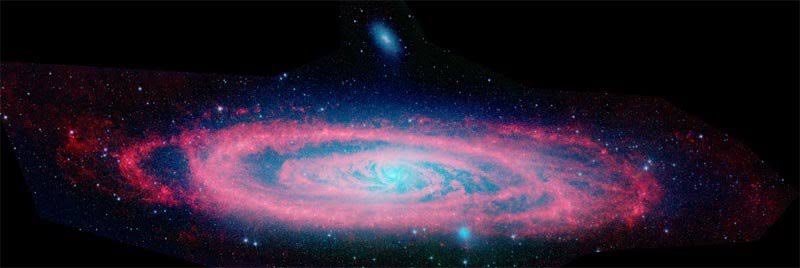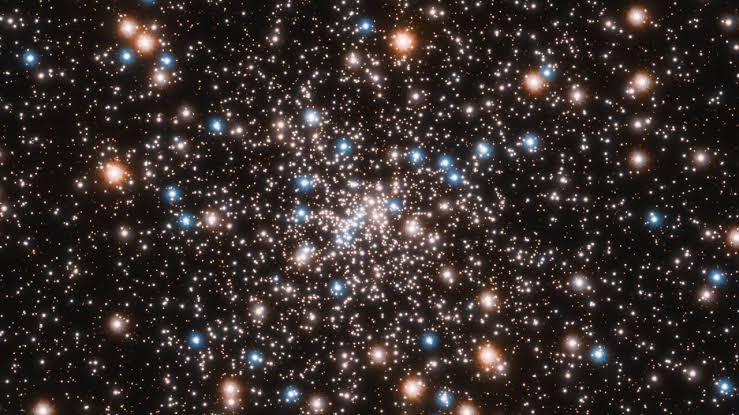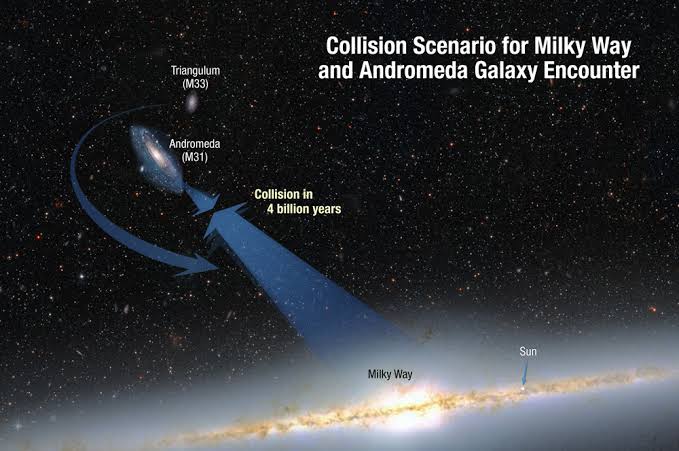A growing body of research suggests that galaxies expand by merging with other galaxies. Numerous interacting galaxies have been photographed by telescopes like Hubble, including well-known ones like Arp 248.
The Cannibalism Of Galaxies

The Andromeda galaxy, the nearest big galaxy to the Milky Way, has ingested other galaxies twice, according to recent research.
According to Geraint Lewis from the University of Sydney, “a few years ago we found that in the distant fringes of Andromeda, there was an indication in the objects orbiting it that the galaxy hadn’t been grazing, but it had consumed vast quantities in two consecutive epochs.”
In a recent study titled “Chemo-dynamical substructure in the M31 inner halo globular clusters: Further evidence for a recent accretion event,” Lewis is the paper’s lead author. The paper is currently accessible on the pre-press website arxiv.org and will be published in the Monthly Notices of the Royal Astronomical Society.
What Was Scientists’ Observation?
In a recent study titled “Chemo-dynamical substructure in the M31 inner halo globular clusters: Further evidence for a recent accretion event,” Lewis is the paper’s lead author. The paper is presently accessible on the pre-press website arxiv.org and will be published in the Monthly Notices of the Royal Astronomical Society.
In a press release, Lewis stated that the new finding “provides a clearer picture of how our local universe has come together.” It indicates that at least one of the large galaxies has experienced this sporadic feeding of small galaxies.
Related: What is the relationship between Globular Clusters and Milky Way?
What Are Globular Clusters?

In this study, globular clusters are the main focus. They are older, lower metallicity groups of stars. The Milky Way contains at least 150, and possibly more. Though the nature of their contribution to galaxy evolution is unclear, they do play a part.
The objects known as globulars are more common in the halo of a galaxy than their opposites, open clusters, which are found in the galactic disks.
In Andromeda’s inner halo, the scientists who conducted this study found a population of globulars that share the same metallicity. Elements heavier than hydrogen and helium are referred to as metals in astronomy, and metallicity refers to the elemental composition of stars.
What Are The Observations About Globular Clusters?
The globulars are less metallic than the majority of the stars in the same area, indicating that they are not native to Andromeda and originated from somewhere else. Since there were fewer heavy elements in the early Universe than there are now, it also implies that they are older.
Lewis gave the group of globulars the Welsh name Dulai Structure, which translates to “black stream.” The Dulais Structure is probably a collection of 10 to 20 globulars that aren’t rotating with Andromeda. However, they are not the only misaligned globular group.
The Dulais Structure
The Dulais Structure is proof that Andromeda consumed a clump of globulars at some point during the last 5 billion years. The second group consists of a subpopulation of globulars, which is proof of a second feeding event that occurred between 8 and 10 billion years ago.
The globular clusters, according to Lewis and his co-authors, differ kinematically from other clusters in the same location and have lower metallicities. The Dulais Structure rotates in a different direction from the Andromeda galaxy.
The Dulais Structure appears to Lewis and his partners to be the messed-up leftovers from supper. It’s a dim stream with brilliant star clusters in it. It provides more proof that giant galaxies interact to create enormous displays throughout the Universe and that larger galaxies engage in a form of galactic cannibalism by consuming smaller globular clusters.
“What was actually ingested is the next inquiry that follows. Because it doesn’t seem like there was just one thing, but rather that a number of things have been steadily pulled apart, “Lewis added.
“Over the past few decades, we’ve learned that galaxies expand by consuming smaller systems. When small galaxies fall in, they get eaten; this is galactic cannibalism.”
Use Of Webb’s Equipments
The universe’s matter was more densely packed at the time these feeding events took place. There may have been more of these things going on in the universe ten billion years ago. This is among the factors driving astronomers’ desire for increasingly potent telescopes like the James Webb. They can look further into the past and see light from extinct galaxies.
“We are aware that the universe was devoid of features when the Big Bang occurred, but that it is currently teeming with galaxies. Did those galaxies develop over time, or were they born fully formed?” stated Lewis.
Related: What will happen when the Milky Way and Andromeda galaxy collide?
Observations Of Mily Way And Andromeda Galaxies

Astronomers are interested in learning more about the past of our own Milky Way galaxy. All of us would. Because we are a part of it, it is challenging to do that by observations.
But Andromeda offers a chance to examine galaxy evolution from a distance, and scientists like Lewis and his colleagues are seizing the opportunity. Because Andromeda is a spiral galaxy like the Milky Way, some of the lessons learned about galaxy mergers from Andromeda can also be applied to our galaxy.
However, there is still more research to be done before scientists can draw any conclusions about the Milky Way in regards to general mergers and consumption. The objective is to provide a more thorough timeline of galaxy evolution throughout the cosmos.
“We are interested in finding out whether the Milky Way has behaved similarly or differently. Regarding the overall picture of how galaxies form, both of those have intriguing ramifications “said Lewis.
The Two Dimensional Understandings
“We need to account for this in our models of how galaxies form, so we want to develop a more precise clock to tell us when these events took place.” Lewis and the others only have a two-dimensional historical understanding of the Dulais Structure at this time.
The dimensions are chemistry and speed. Finding the distances of each of these objects will add a third dimension, completing the picture of the globulars’ past and their consumption by Andromeda. At this time, Lewis isn’t 100% certain we can call them globulars, and he won’t be until there is more information. Thus, “Dulais Structure” was given.
Then, he continued, “we can start to run the clock backwards and see if we can obtain this cohesive picture of when everything dropped in.” This will enable us to determine orbits and where things are headed.
“We were unable to categorise it as a galaxy-like entity because we are unsure whether the signature we observe is the result of one large object disrupting or seven smaller things disrupting. Because of this, we sometimes refer to it as a structure rather than a specific galaxy.”
Clearly, there is a connection between the Andromeda galaxy and the Dulais Structure. But Lewis is hesitant to draw any firm conclusions at this time, staying true to his scientific training.
Conclusion
According to Lewis, it has “opened a new door in terms of our comprehension.” But I believe we still need to figure out exactly what it is telling us.
In their work, the authors make a convincing case. The orbital axis of this Dulais Structure, the authors note in their paper, “is intriguingly closely aligned with that of the younger accretion event recently identified using a sub-population of globular clusters in the outer halo of Andromeda, and this is strongly suggestive of a causal relationship between the two.”
“The accretion of a significant progenitor (about 1011 solar masses) into the Andromeda halo during the last few billion years, which may have taken place as part of a larger group infall, is a natural explanation for the kinematics of the globular clusters in the Dulais Structure,” according to the study.
